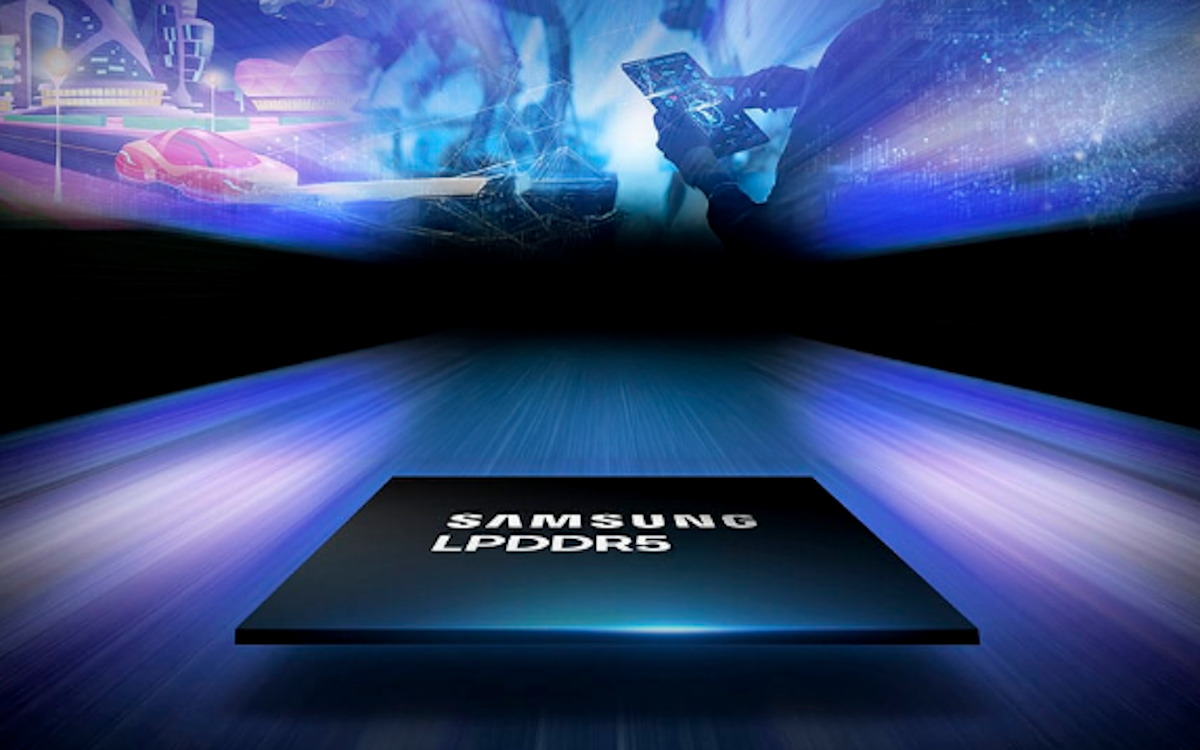
Samsung has announced a new advance in Dram Memory Technology by presenting the LPDDR5-Ultra-Prowhich reaches impressive 12,7 GT/s.
The news was released during the International Solid-State Circuits Conference (ISSCC) and represents a huge leap in data transmission speed, exceeding the traditional LPDDR5X specifications and approaching the future LPDDR6.

Technological advancement and applications
The new memory chip, manufactured in Samsung’s 5th generation 10nm process, operates with a Standard voltage of 1.05V and has a capacity of 16 GB.
Although there are variants of greater density ever announced, such as 24 GB and 32 GB LPDDR5X chips, the 16 GB version is ideal for high speed applications but do not require major storage capacities.
Among the segments benefited by innovation are artificial intelligence, augmented reality, virtual reality and servers, as well as LPCAMM2 modules for PCs and edge servers.
Evolution of LPDDR memories
| Specification | Introduction year | Maximum speed (GB/s per pin) | Main improvements |
|---|---|---|---|
| LPDDR1 | 2007 | 0.4 GB/s | First low -power version, based on DDR1, focused on mobile devices. |
| LPDDR2 | 2009 | 1.1 GB/s | Better energy efficiency and multiple tensions support. |
| LPDDR3 | 2013 | 1.6 GB/s | Significant increase in bandwidth and lower energy consumption. |
| LPDDR4 | 2014 | 3.2 GB/s | Double the transfer rate of LPDDR3, higher energy efficiency. |
| Lpddr4x | 2017 | 4.2 GB/s | Optimized version of LPDDR4 with lower voltage and greater efficiency. |
| LPDDR5 | 2019 | 6.4 GB/s | New standard with higher speed, energy efficiency and AI and 5G optimizations. |
| LPDDR5X | 2021 | 8.5 GB/s | LPDDR5 expansion with higher stability and speed. |
| LPDDR5X | 2023 | 9.6 GB/s | Increased transfer rate for more demanding demands. |
| LPDDR5X | 2024 | 10.7 GB/S. | New advance for higher performance on mobile devices and servers. |
| LPDDR5-Ultra-Pro | 2025 | 12.7 GB/s | Implementation of advanced calibration and equalization for maximum stability. |
Improvements to achieve high speed
To achieve this high transfer rate, Samsung implemented two advanced technologies: the Auto Calibration Loop in four phases and transceptor equalization coupled in alternating current.



The first reaches precise synchronization of clock signals at 0 °, 90 °, 180 ° and 270 °, reducing deviations that could compromise performance. Transceptor equalization compensates for signal losses and interference along the transmission channel, optimizing both reception and data transmission.
The results obtained by Samsung show that, even operating at 12.7 GT/s, the new memory maintains stability at 1.05V, ensuring integrity and reliability in data transmission
Where are these memories used today?
Memories LPDDR (Low Power Double Data Rate) are widely used on devices that require high performance combined with energy efficiency.
With each new generation, these memories become faster and more efficient, allowing advances in various applications.
Main sectors that use LPDDR currently:
- Mobile devices: Smartphones and tablets depend on LPDDR memories to ensure a fluid experience, supporting multiple tasks and demanding applications such as games and artificial intelligence.
- Notebooks ultrafinos: LPDDR memory is used in Ultrooks e MacBooks to balance high performance and low energy consumption.
- Wearables: Smartwatches, augmented reality glasses and smart bracelets wear LPDDR for efficiency and less heating.
- Automobiles: Advanced driver assistance systems (ADAS), infotainment and vehicle cameras use LPDDR to process large real -time data volumes.
- Servers and edge data centers: AI devices, edge computing and compact servers use LPDDR to process information quickly, minimizing latency.
- Virtual reality (VR) and increased (air): VR/AR headsets depend on LPDDR speed to offer immersive experiences without delays.
- Consoles Priars: Nintendo Switch and other portable game devices like Steam Deck use LPDDR to maximize energy efficiency performance.
With the arrival of LPDDR5-Ultra-Profurther advances are expected in these sectors, allowing more demanding applications and greater energy efficiency.
The results are promising
Samsung internal measurements confirm the efficiency of new calibration and equalization techniques. The chip maintains reliable operation at 12.7 GT/SE, even at 10.7 GT/s, remains stable above 0.9V. Reading and writing margins, measured at 0.71 and 0.68 units respectively, show the robustness of the signal.
With this innovation, Samsung reinforces its leadership in the DRAM memories market, preparing the land for future generations, such as LPDDR6, which promises to establish new performance levels for mobile devices, PCs and emerging applications.

Also read:
What to expect from LPDDR6?
A LPDDR6 It is being awaited as the next great advance in the evolution of mobile memories, promising even more speed, energy efficiency and new technologies to support future demands.
Possible expected improvements in LPDDR6:
- Even higher speeds: LPDDR6 is expected to exceed 14-16 GB/s per pineexceeding the rates of LPDDR5-Ultra-PRO (12.7 GB/S).
- Improved energy efficiency: As with previous generations, LPDDR6 is expected to further reduce the consumer consumption by transfer, extending battery life on mobile devices.
- Reduced latency: Improvements in access times can increase the responsiveness of AI applications, games and data processing.
- Improved support for artificial intelligence: With increasing demand for AI models directly on mobile devices and edge servers, LPDDR6 can bring specific optimizations for this type of processing.
- Largest bandwidth for 5g and 6g: With mobile networks evolving, devices will need faster memories to deal with increasing data flows.
- New manufacturing materials and techniques: LPDDR6 can be produced in technologies below 10nmusing new architectures to reduce heat and improve stability at high frequencies.
Although there is still no official date for the introduction of LPDDR6companies like Samsung, Micron and SK Hynix are already developing prototypes, and the standard can be made official Jatc In the coming years.
The arrival of this new technology should directly impact Smartphones, notebooks, servers, autonomous cars, IoT devices and augmented realityestablishing a new level of performance.
Source: Tom’s Hardware

Join the Adrenaline offers group
Check out the main offers of hardware, components and other electronics we find over the internet. Video card, motherboard, RAM and everything you need to set up your PC. By participating in our group, you receive daily promotions and have early access to discount coupons.
Enter the group and enjoy the promotions
Source: https://www.adrenaline.com.br/samsung/samsung-lanca-memoria-lpddr5-ultra-pro/


